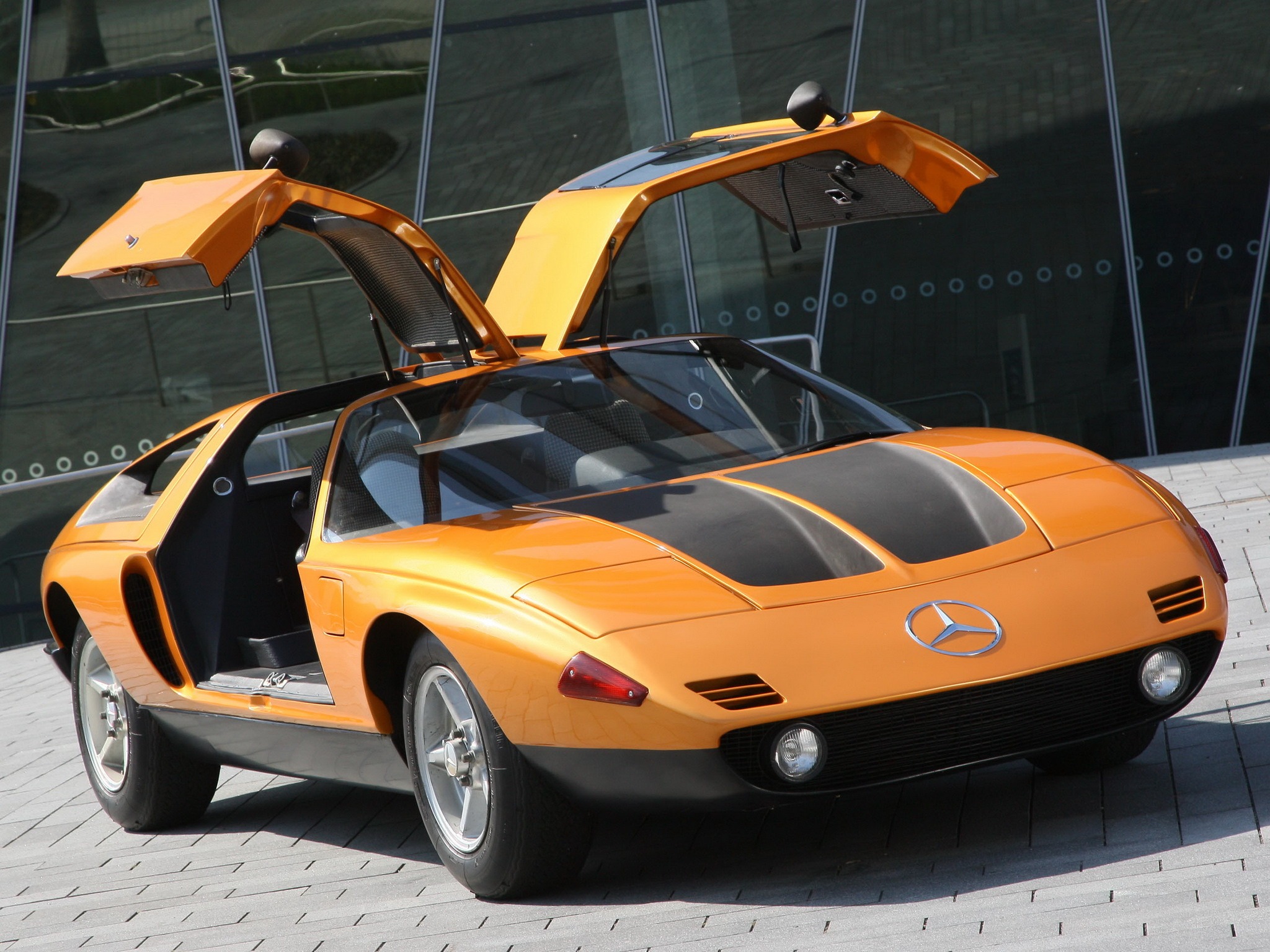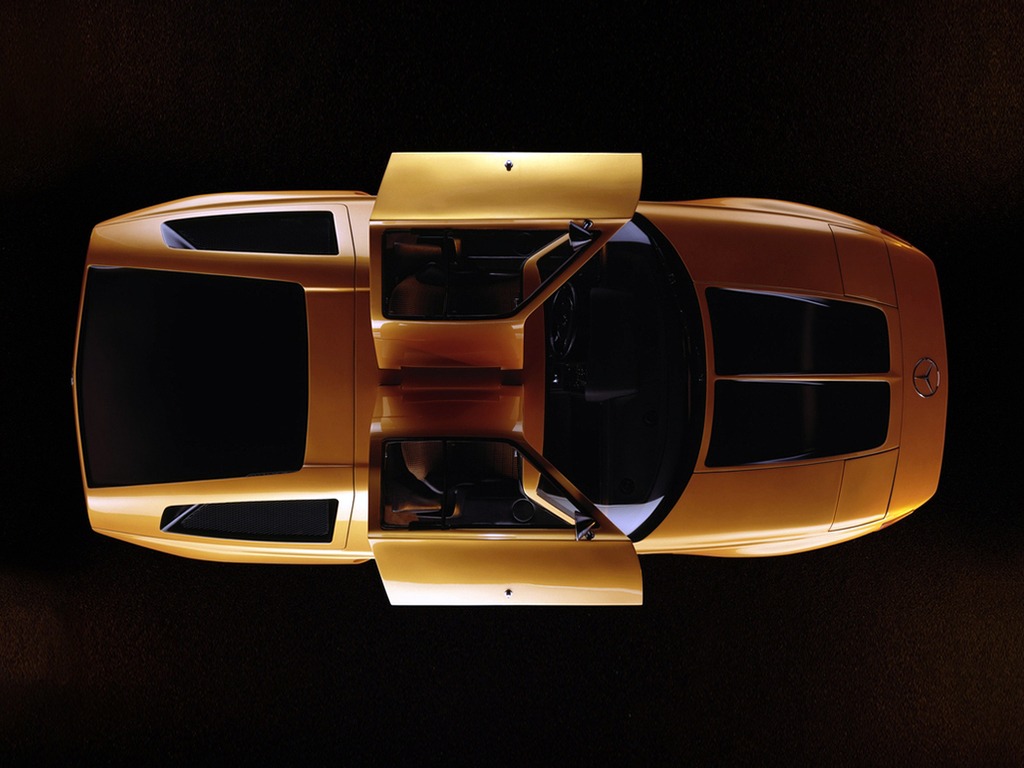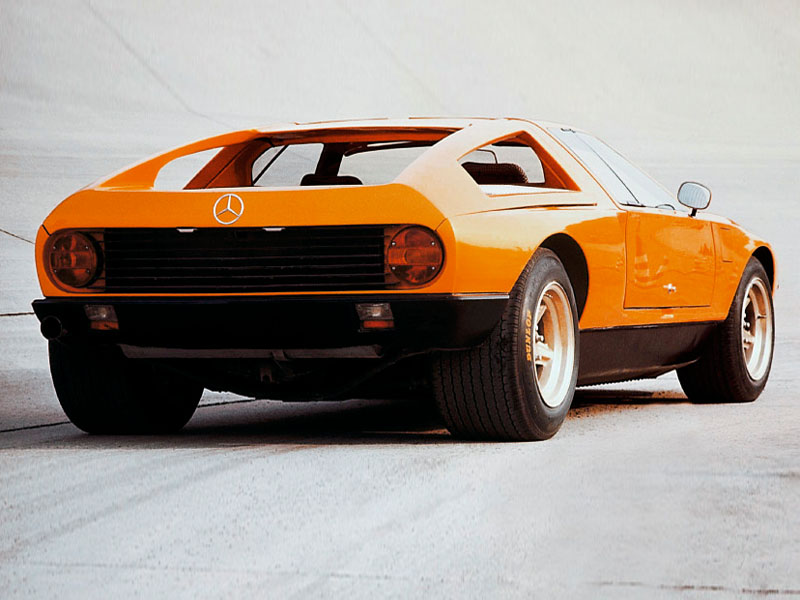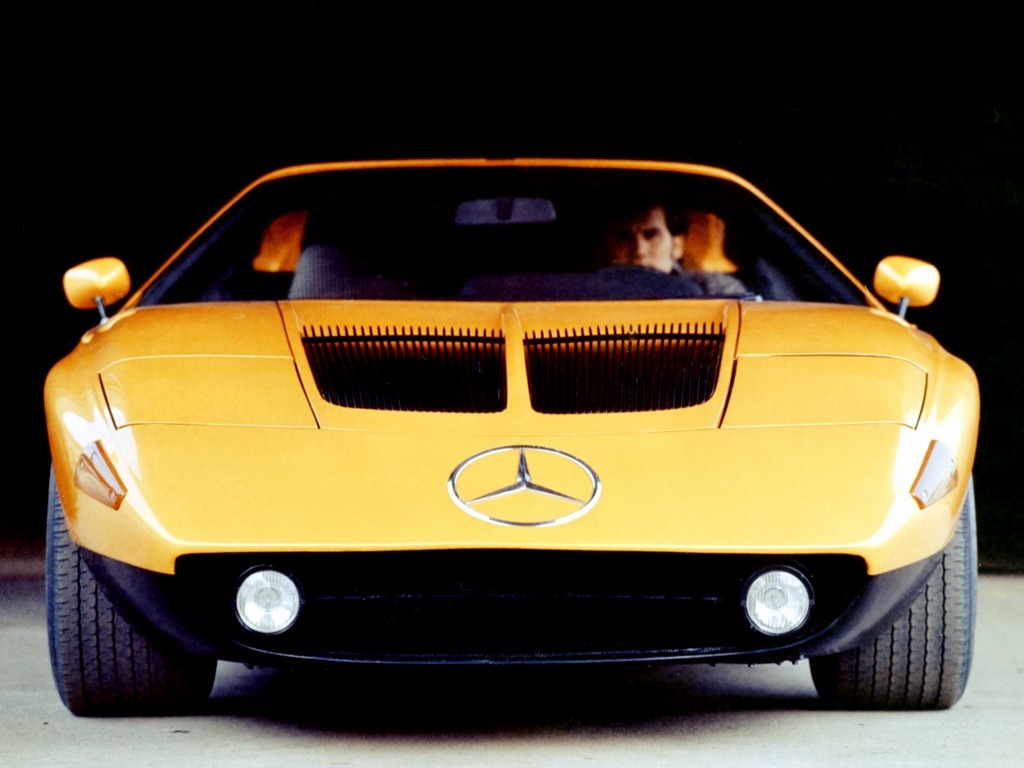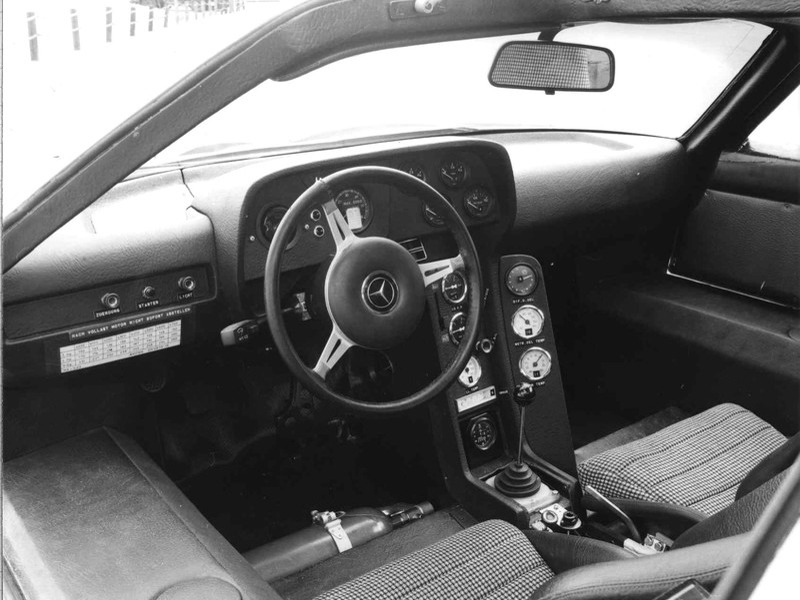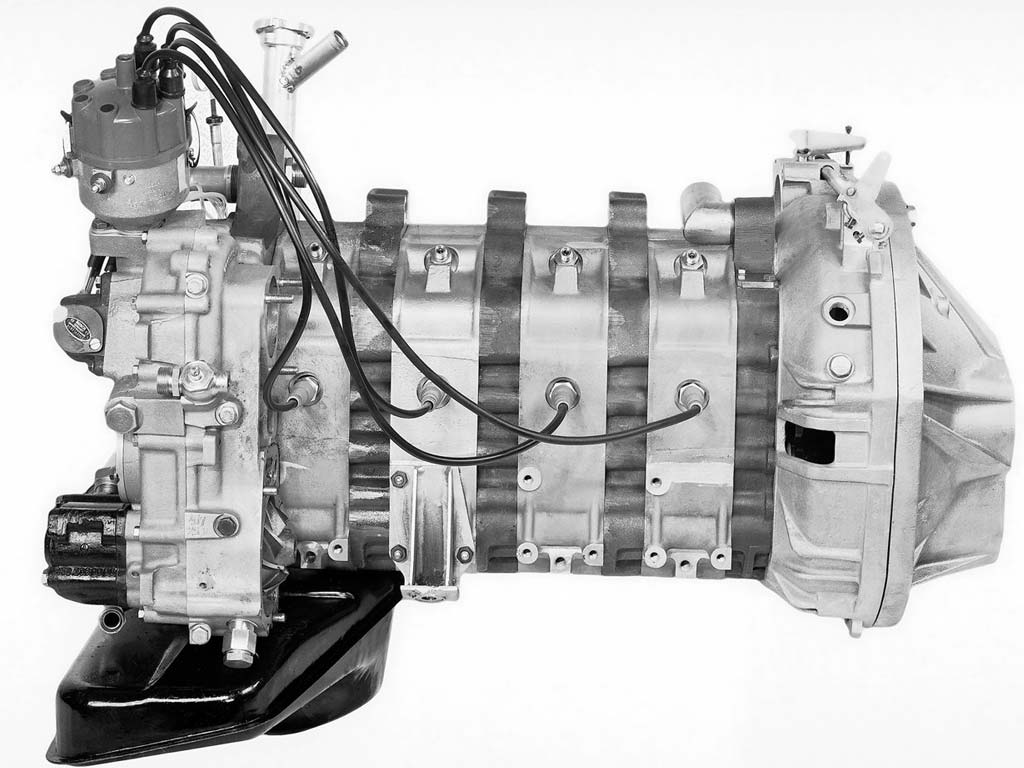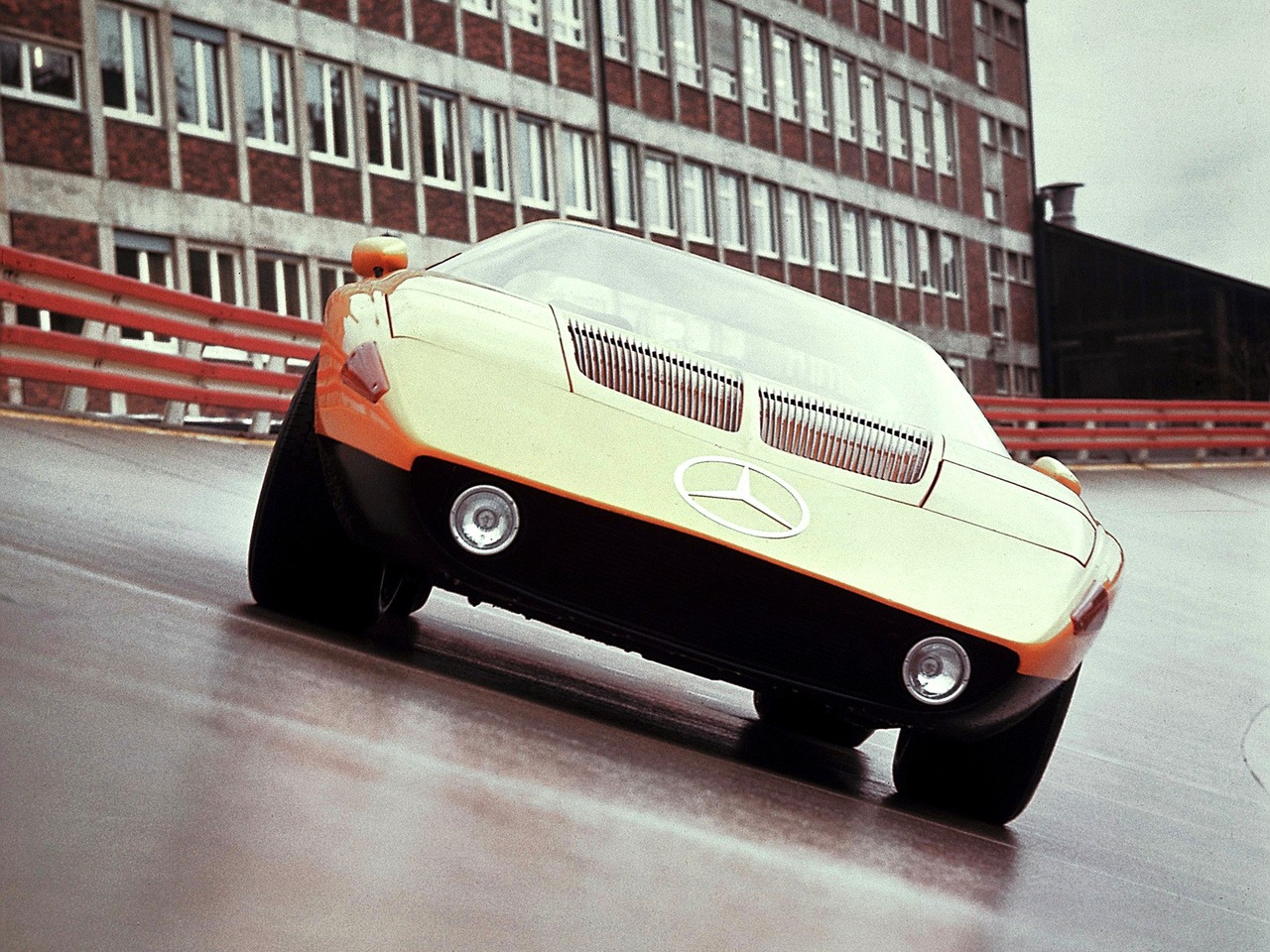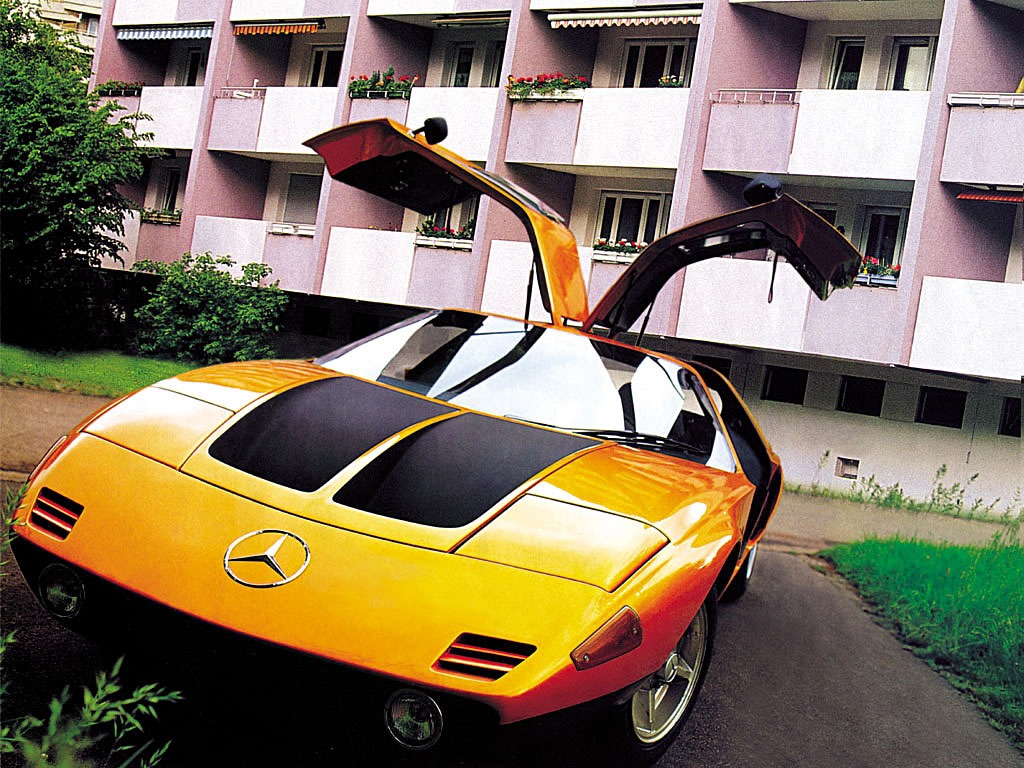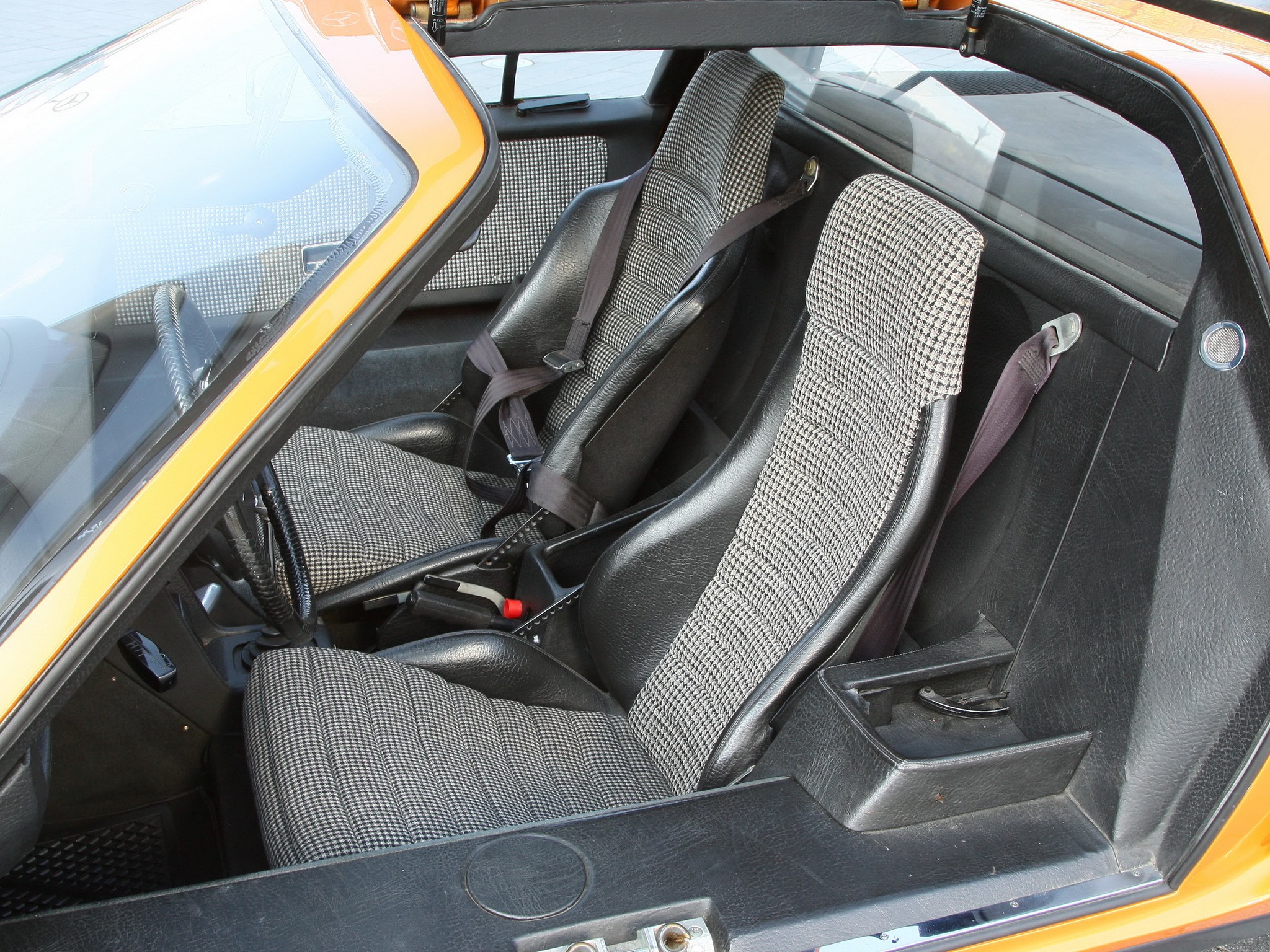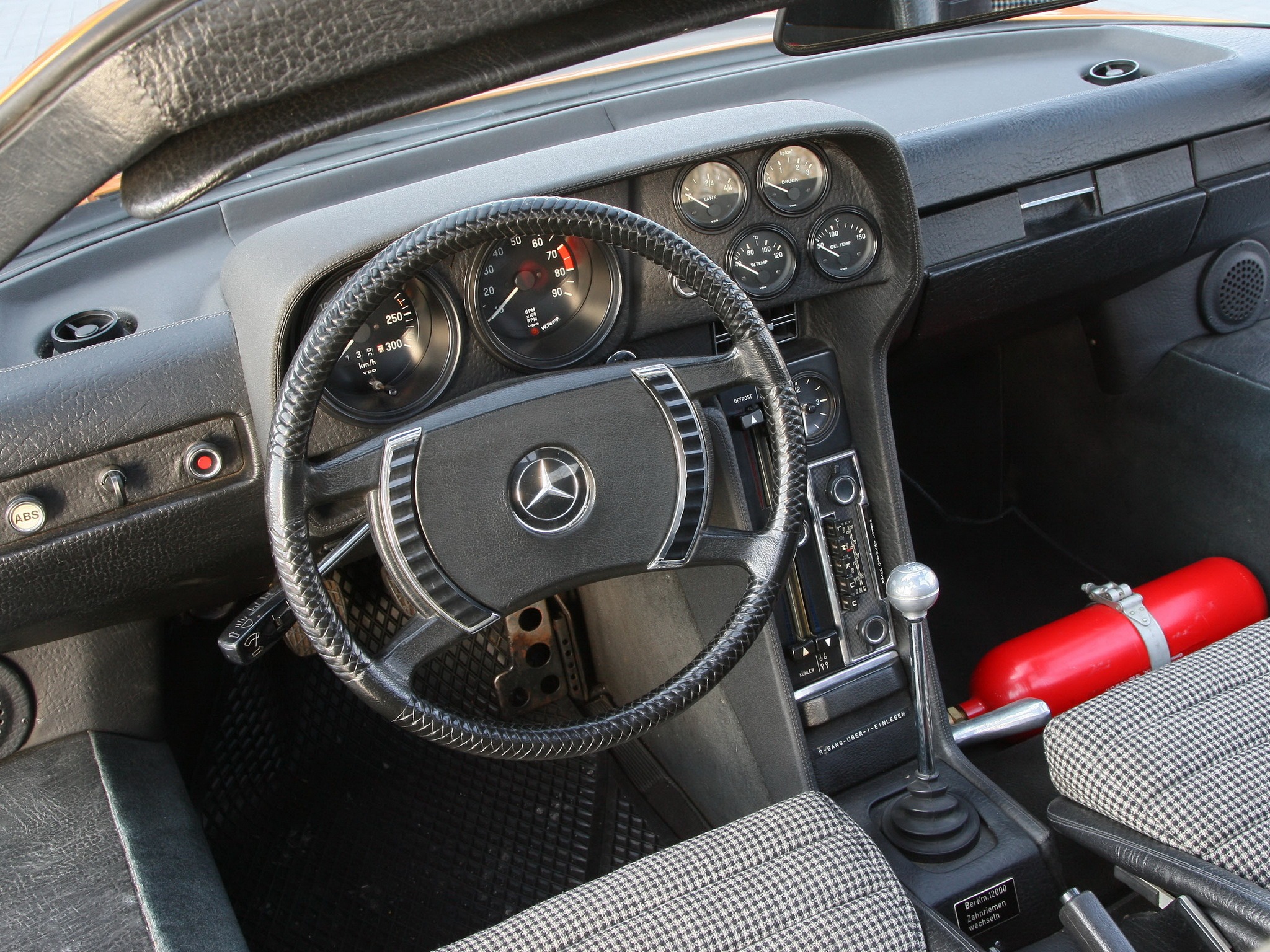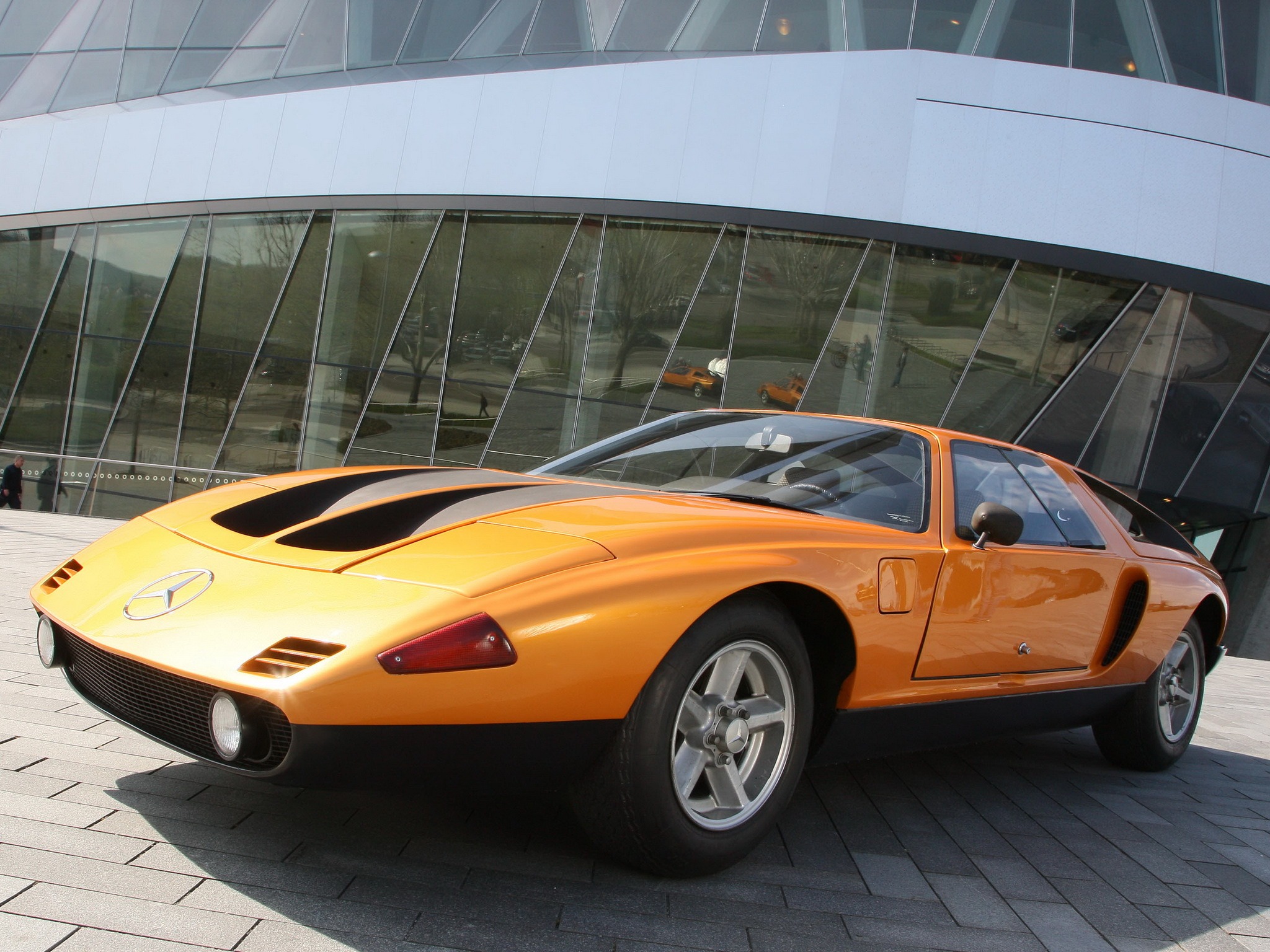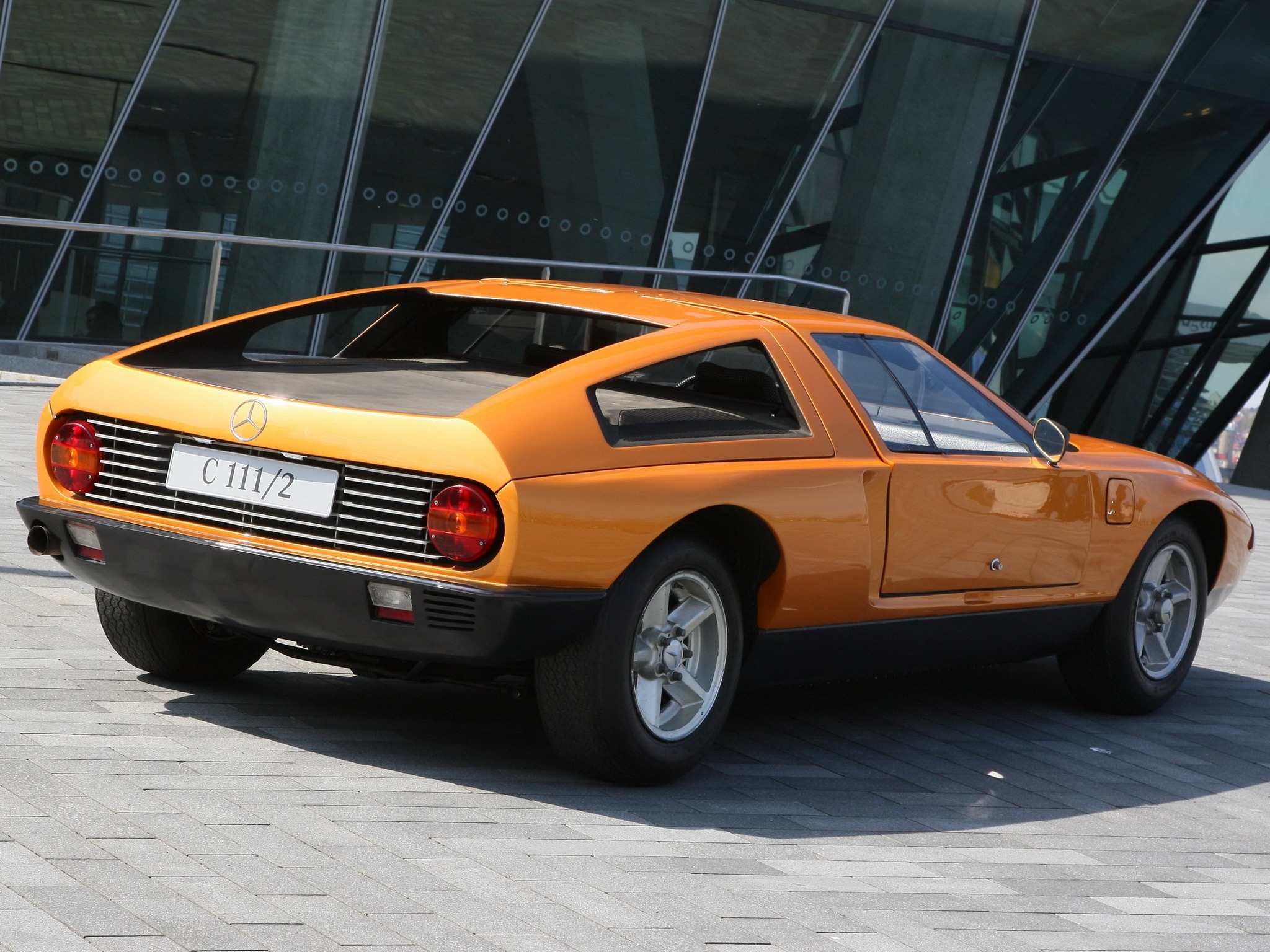In 1964 the German NSU concern introduced the Spyder, the world’s first Wankel-engined production car. For the next 15 or so years, many of world’s leading motor manufacturers toyed with this rotary power unit until it finally was dropped by an industry that, by the late 1970s, was turning towards smaller and less polluting cars.
One of the many companies that experimented with the concept was Mercedes-Benz, and its ingenious mid-engined C111 coupe apperead in 1969. The triple rotor, fuel-injected power unit, displacing the equivalent of 3.6 litres, had the distiction of being the largest capacity Wankel engine of its day it endowed this sleek coupe with a top speed of 265 km/h (165mph).
Gull-Wing Doors
The mid-location of the power unit meant that the car had an aerodynamically efficient nose, while the two-setter, glass-fibre bodywork incorporated Mercedes-Benz’s legendary gull-wing doors. These had been made famous by the 300SL coupe of 1954-57 vintage. Dispate rumours that the company would produce a run of 50 cars, in reality only a handful were built, one of which subsequently appeared at the 1970 Geneva Motor Show. This featured revised bodywork incorporating changes to the nose and tail made with a view to improving the driver’s rear visibility.
Rotary Engine
Less outwardly apparent was the fact that the engine was now a four-rotor unit and the equivalent of 4.8 litres in capacity. Top speed was a claimed 299 km/h (186mph). The appeal of a rotary engine such as the Wenkel was compelling. It offered the driver smooth, turbine-like power and was more mechanically efficient than a conventional reciprocating engine. It accordingly used fewer components, was cheaper to build and was also more compact. But on the debit side was heavier petrol and oil consumption, which produced more emissions, and, above all, undue wear on the seals on the tips of the triangular rotor at the unit’s heart.
At this time, the world was turning to smaller-capacity, more economical cars in the wake of the 1973-74 oil price rise, triggered by the Arab/Israeli war. In addition the problem of emissions, particularly on the all-important American market, had assumed critical significance and most manufacturers consequently sidelined the thirsty, polluting Wankel. Mercedes-Benz was one of them.
However, the concept formed the basis of the record-breaking coupe of 1976 which sported a five-cylinder turbocharged diesel fitted in place of the rotary unit. A further development of 1979, the , powered by a 500bph turbocharged V8 engine, lapped the Nardo circuit in Italy at over 402km/h (250mph), so breaking the world’s old established closed-course speed record.
Wood, Jonathan (1997) Concept Cars, Paragon, ISBN 0-75252-084-9.

